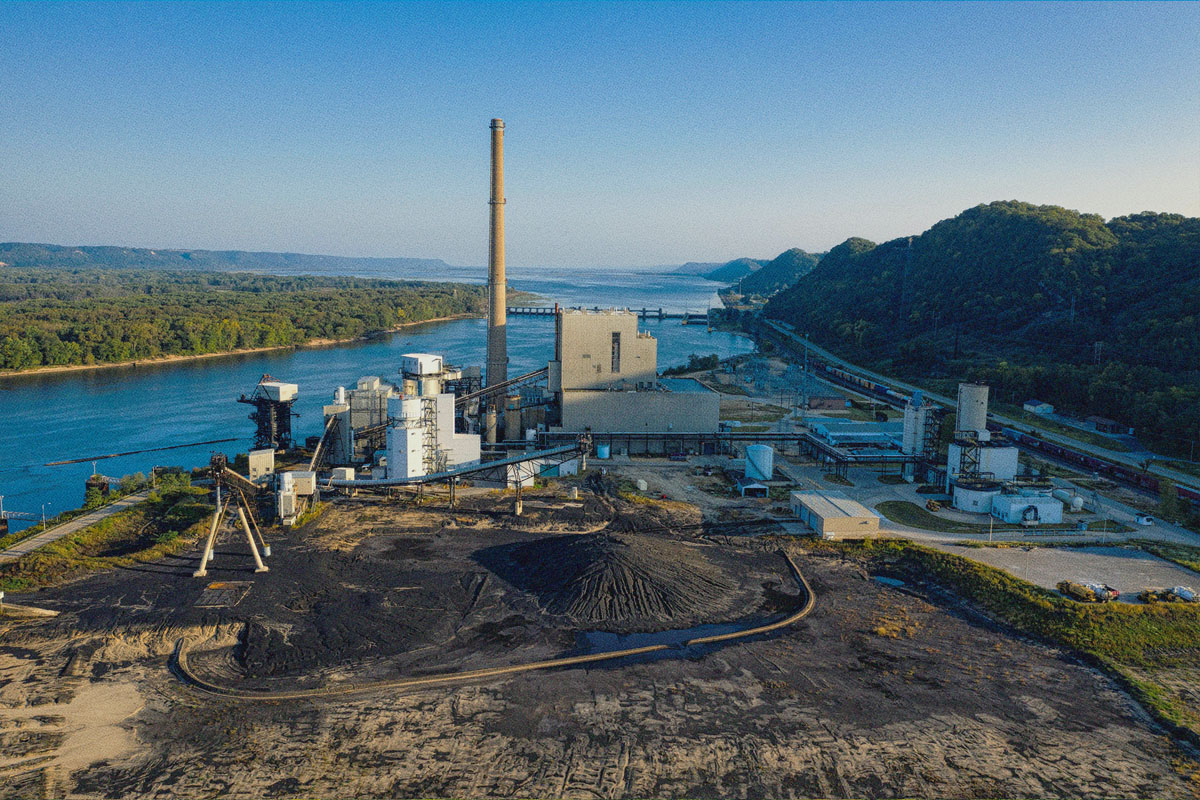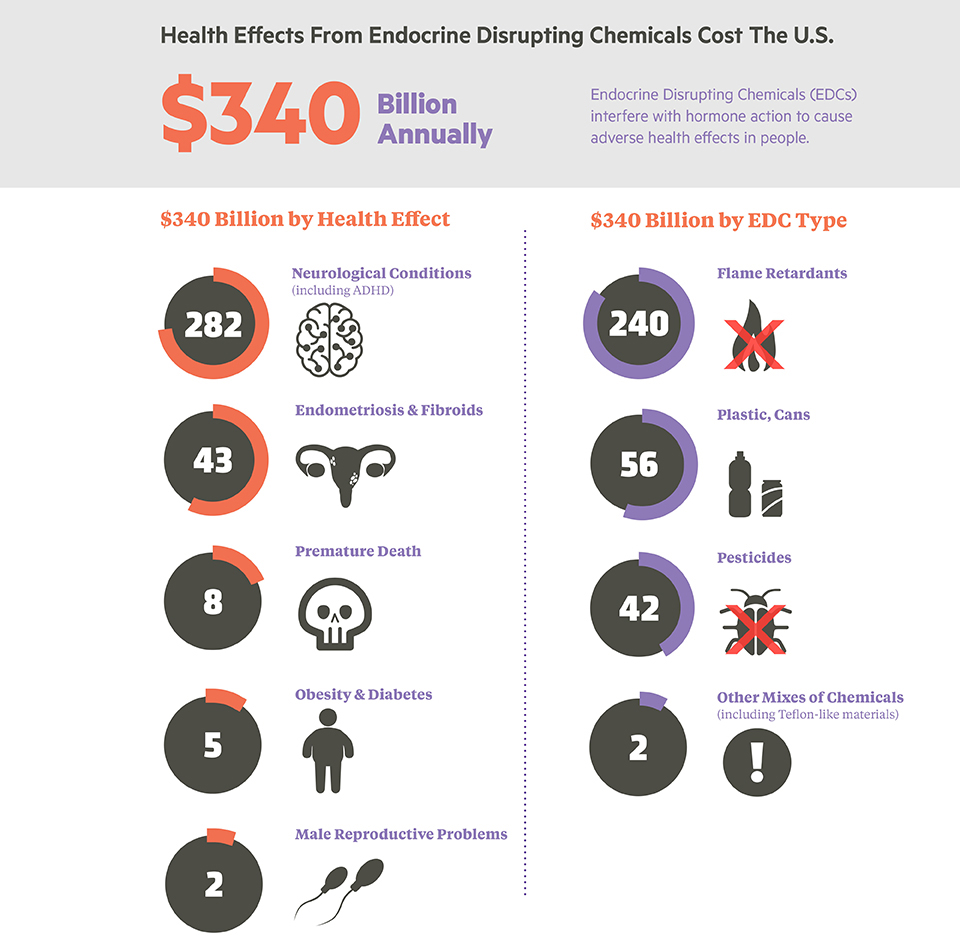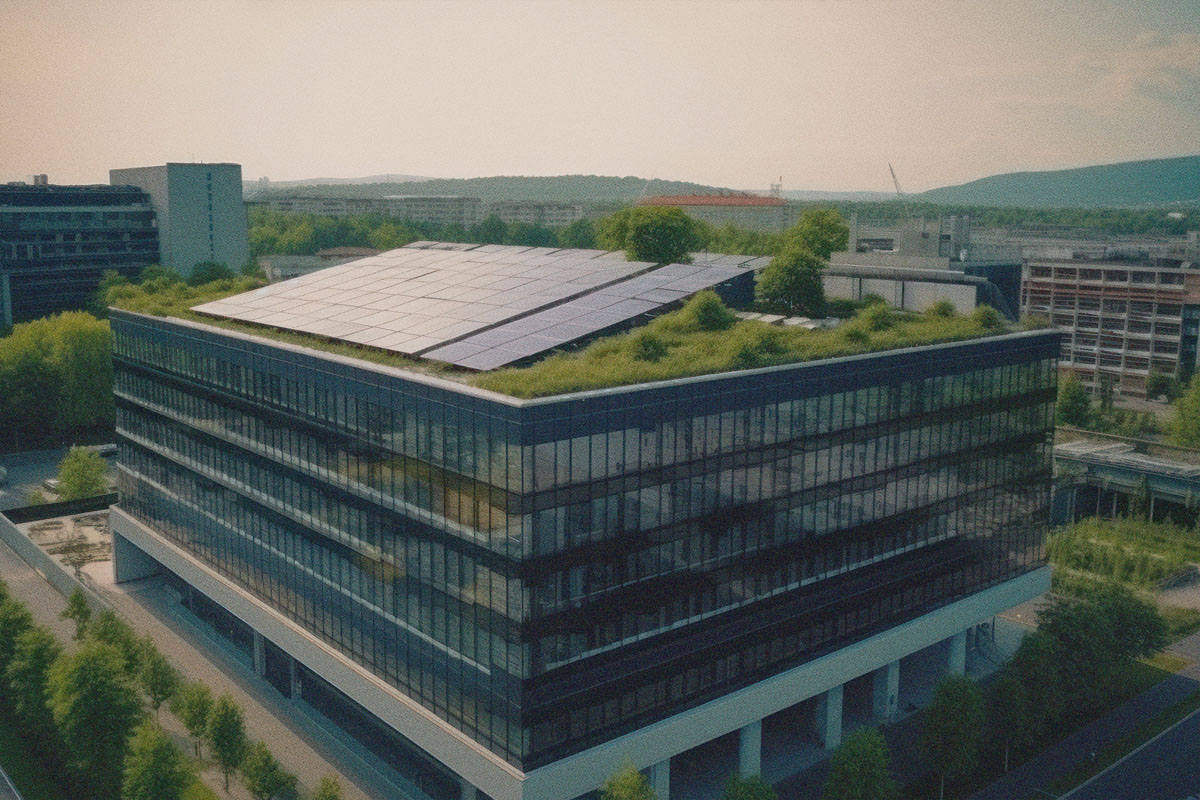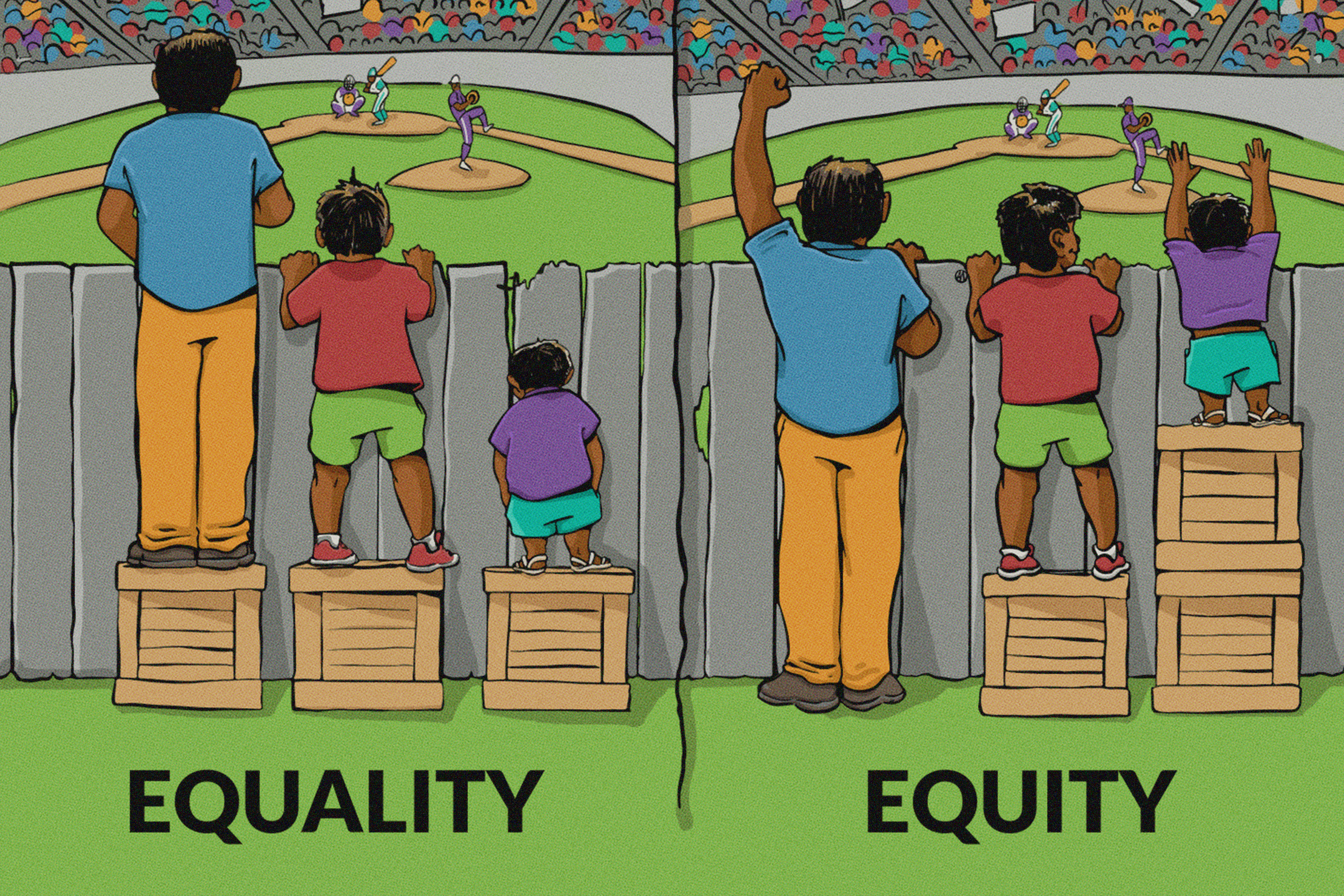 READ HABITABLE’S NEW REPORT
READ HABITABLE’S NEW REPORTMy daughter is nine, and she is going through the first stages of puberty.
This is four years before I reached that stage and two years before any of my three sisters or sister-in-law hit this developmental milestone. While nine is still considered in the normal developmental range for girls in the United States, it is certainly early compared to the women in my generation.
As HBN’s Chief Research Officer, it is my job to understand the impacts that different chemicals can have on human health and work every day to help people make informed decisions about the products they use. As a mother, it is also my job to keep my kids safe. While my research will not help me answer the question about why my daughter may be going through puberty earlier than I did, I can share what I have learned about chemicals found in building materials and their potential impacts on children’s health in the hope that you can join me in making the best decisions we can for our future generations.
While this article will focus on one environmental factor (exposure to pollutants related to the use of building products), I recognize this is one of many factors that impact children’s health. These include biological factors (e.g. sex, genetics, age), social factors (e.g. income, culture), and environmental factors (e.g. diet, exposure to pollutants).1 With this in mind, this article does not tie specific products or chemicals to specific health outcomes in children. Instead, this article discusses two groups (or classes) of chemicals used in building products that are known to have reproductive toxicity or endocrine disrupting concerns and are found both in household dust and children’s bodies.
Children are not little adults. For example, my five year old likes to sleep in a small cardboard box at night these days with his neck at an angle that would take me weeks to uncrick. They also eat more, inhale more, and drink more than adults per kilogram body weight.2 They also spend more time on the floor (see box story above) and are therefore more likely to ingest or inhale household dust. Their immune and metabolic systems are not fully developed, so their bodies process and eliminate chemicals differently than adults. Lastly, children’s bodies are in a constant state of growth and development, and as such they can be more sensitive to chemicals than adults.3


Let’s explore two groups of chemicals found in building products and in children’s bodies that can impact the endocrine systems.
Bisphenols
Bisphenols are a group of chemicals including bisphenol A (BPA) and bisphenol S (BPS). BPA is on the EU Substances of Very High Concern (SVHC) list due to endocrine disrupting properties. Specifically, many bisphenols mimic the hormone estrogen. BPA is considered “Toxic to Reproduction” by the European Chemicals Agency. Bisphenols are found in many different types of products including plastic items, paper receipts, and metal food and beverage can liners. In building products, BPA-related compounds are found in “epoxy” resin products, for example, epoxy flooring adhesive and epoxy fluid-applied flooring.
In last year’s article, “There’s What In My Body?” I shared how I found BPA and BPS in my body through a biomonitoring study by Silent Spring. Compared to other participants in the study, I had lower levels of BPA but higher levels of BPS, a common replacement for BPA. I was surprised and disturbed by the results, and I cannot help but wonder what my daughter’s levels would be today if we tested for bisphenols or any of the other endocrine disrupting compounds found in household products. Levels of BPA in children are typically higher than for adults. Most importantly, even tiny amounts of endocrine disrupting chemicals, including BPA, can lead to health and behavioral problems in developing children.4 For example, increasing urinary BPA levels in children are linked to an increase in behavioral regulation problems, anxiety, and hyperactivity.
The good news is that bisphenols are rapidly metabolized. If you can identify and remove sources of bisphenols from your home and diet, you can reduce your exposure.
Orthophthalates
Orthophthalates are a group of chemicals used as plasticizers – additives that make plastics more flexible. Orthophthalates can be developmental toxicants per the U.S. National Toxicology Program.5 Some common orthophthalates interfere with the production of testosterone, which can have irreversible effects on the male reproductive system. Higher exposure to certain orthophthalates has been associated with higher incidences of preterm birth; in particular, mothers who had consistently higher exposures to orthophthalates were five times more likely to experience spontaneous preterm birth (Ferguson et al 2014, JAMA Pediatrics). Preterm birth is associated with a variety of adverse health outcomes including increase in disability as young adults.6
Orthophthalates are sometimes called “everywhere chemicals” because they are so common in household products. With respect to building products, up until recently orthophthalates were prevalent in vinyl flooring. While the vinyl flooring industry has largely phased them out of new products, many homes with vinyl flooring installed before 2015 will still likely contain orthophthalate plasticizers. Orthophthalates can also be found in sealants used throughout the home. While the sealant industry is beginning to phase out these chemicals, they are still commonly used.
Similar to bisphenols, phthalates are metabolized quickly, so identifying potential sources and removing those from the home is the easiest way to reduce exposure. Possible sources include older plastic toys, cleaning products, personal care products, sealants, older vinyl flooring (pre-2018), and fragrances.
My daughter is not an outlier. Over the last 40 years, the average age of initial onset of puberty has decreased by 12 months. There are likely multiple reasons for this trend. However, an increase in exposure to a cocktail of endocrine disruptors is a possible explanation. Collectively, we can use our voices and buying power to shift the market towards safer products.
What can you do to help?
- You can step up out of red and choose products that are ranked ideally yellow or green through Informed™
- Ask your retailer to keep products containing hazardous chemicals off of the shelves. The Mind the Store campaign by Safer Chemicals, Healthy Families encourages retailers to move away from phthalates, bisphenols, and other hazardous chemicals. Hot off of the presses is the latest Retailer Report Card. See how your favorite retailer stacks up.
- Support legislation that uses the class-based approach to ban problematic chemicals. The Green Science Policy Institute develops research and supports policies that prevent the use of “Six Classes of Harmful Chemicals”. By reducing the use of entire classes of chemicals, we reduce the chance for regrettable substitution and the inefficiencies and dangers associated with a one-at-a-time or “toxic whack-a-mole” approach to chemical restrictions. In addition to bisphenols and phthalates, GSPI’s Six Classes include per- and polyfluorinated alkyl substances (PFAS), antimicrobials, flame retardants, some solvents, and certain metals. Numerous state legislatures have passed laws restricting the use of bisphenols and phthalates in a variety of products.
SOURCES
- Commission and for Environmental Cooperation. “Toxic Chemicals and Children’s Health in North America: A Call for Efforts to Determine the Sources, Levels of Exposure, and Risks That Industrial Chemicals Pose to Children’s Health,” 2006. http://www3.cec.org/islandora/en/item/2280-toxic-chemicals-and-childrens-health-in-north-america-en.pdf.
- Miller, Mark D., Melanie A. Marty, Amy Arcus, Joseph Brown, David Morry, and Martha Sandy. “Differences between Children and Adults: Implications for Risk Assessment at California EPA.” International Journal of Toxicology 21, no. 5 (October 2002): 403–18. https://doi.org/10.1080/10915810290096630.
- Commission and for Environmental Cooperation. “Toxic Chemicals and Children’s Health in North America: A Call for Efforts to Determine the Sources, Levels of Exposure, and Risks That Industrial Chemicals Pose to Children’s Health,” 2006. http://www3.cec.org/islandora/en/item/2280-toxic-chemicals-and-childrens-health-in-north-america-en.pdf.
- Braun, Joe M., and Russ Hauser. “Bisphenol A and Children’s Health.” Current Opinion in Pediatrics 23, no. 2 (April 2011): 233–39. https://doi.org/10.1097/MOP.0b013e3283445675.
Braun, Joe M., Amy E. Kalkbrenner, Antonia M. Calafat, Kimberly Yolton, Xiaoyun Ye, Kim N. Dietrich, and Bruce P. Lanphear. “Impact of Early-Life Bisphenol A Exposure on Behavior and Executive Function in Children.” Pediatrics 128, no. 5 (November 2011): 873–82. https://doi.org/10.1542/peds.2011-1335. - “NTP-CERHR Monograph on the Potential Human Reproductive and Developmental Effects of Di-Isodecyl Phthalate (DIDP).” National Toxicology Program, U.S. Department of Health and Human Services Center for the Evaluation of Risks to Human Reproduction, NIH Publication No. 03-4485. April 2003.
- Lindström, Karolina, Birger Winbladh, Bengt Haglund, and Anders Hjern. “Preterm Infants as Young Adults: A Swedish National Cohort Study.” Pediatrics 120, no. 1 (July 2007): 70–77. https://doi.org/10.1542/peds.2006-3260.
Plastic is a ubiquitous part of our everyday lives, and its global production is expected to more than triple between now and 2050. According to industry projections, we will create more plastics in the next 25 years than have been produced in the history of the world so far.
The building and construction industry is the second largest use sector for plastics after packaging.1 From water infrastructure to roofing membranes, carpet tiles to resilient flooring, and insulation to interior paints, plastics are ubiquitous in the built environment.
These plastic materials are made from oil and gas. And, due to energy efficiency improvements, for example–in building operations and transportation–the production and use of plastics is predicted to soon be the largest driver of world oil demand.2
Plastic building products are often marketed in ways that give the illusion of progress toward an ill-defined future state of plastics sustainability. For the past 20 years, much of that marketing has focused on recycling. But for a variety of reasons, these programs have failed.
A recent study from the University of Michigan makes it clear that the scale of post-consumer plastics recycling in the US is dismal.3 Only about 8% of plastic is recycled, and virtually all of that is beverage containers. Further, most of the recyclate is downcycled into products of lower quality and value that themselves are not recyclable. For plastic building materials, the numbers are more dismal still. For example, carpet, which claims to have one of the more advanced recycling programs, is recycled at only a 5% rate, and only 0.45% of discarded carpet is recycled into new carpet. The rest is downcycled into other materials, which means their next go-around these materials are destined to be landfilled or burned.4 After 20 years of recycling hype, post-consumer recycling of plastic building materials into products of greater or equal value is essentially non-existent, and therefore incompatible with a circular economy.

Why isn’t plastic from building materials recycled?
Additives (which may be toxic), fillers, adhesives used in installation, and products made with multiple layers of different types of materials all make recycling of plastic building materials technically difficult. Lack of infrastructure to collect, sort, and recycle these materials contributes to the challenge of recycling building materials into high-value, safe new materials.
Manufacturers have continued to invest in products that are technically challenging to reuse or recycle – initially cheaper due to existing infrastructure – instead of innovating in new, circular-focused solutions. Additionally, their investment in plastics recycling has been paltry. In 2019 BASF, Dow, ExxonMobill, Shell and numerous other manufacturers formed the Alliance to End Plastic Waste (AEPW) and pledged to invest $1.5 billion over the next five years into research and development of plastic waste management technologies. Compare that to the over $180 billion invested by these same firms in new plastic manufacturing facilities since 2010.5
Globally, regulations that discourage or ban landfilling of plastics have, unfortunately, not led to more recycling overall. Instead, burning takes the place of landfilling as the eventual end of life for most plastics.
Confusing rhetoric around plastic end of life options can make this story seem more complicated than it is.6
- “incineration” or “waste to energy” burns plastic for energy.
- “Plastic-to-fuel” or “gasification” or “pyrolysis” generates fuel. This output is rarely used for anything but burning due to the additional processing required to use for any other purpose.
- “Chemical recycling” could, in theory, lead to new plastic products. This technology is unproven and currently not a scalable solution. The outputs are often burned due to low quality.
Plastic waste burning, regardless of the euphemism employed, is a well established environmental health and justice concern.
Burning plastics creates global pollution and has environmental justice impacts.
In its exhaustive 2019 report, the independent, nonprofit Center for International Environmental Law (CEIL) documents how burning plastic wastes increases unhealthy toxic exposures at every stage of the process. Increased truck traffic elevates air pollution, as do the emissions from the burner itself. Burned plastic produces toxic ash and residue at approximately one fifth the volume of the original waste, creating new disposal challenges and new vectors of exposure to additional communities that receive these wastes.7
In the US, eight out of every 10 solid waste incinerators are located in low-income neighborhoods and/or communities of color.8 This means, in some cases, the same communities that are disproportionately burdened with the pollution and toxic chemical releases related to the manufacture of virgin plastics are again burdened with its carbon and chemical releases when it is inevitably burned at the end of its life.
The issue is global in scale. A recent report by the United Nations Environment Program (UNEP) found that “plastic waste incineration has resulted in disproportionately dangerous impacts in Global South countries and communities.” The Global Alliance for Incineration Alternatives (GAIA), a worldwide alliance of more than 800 groups in over 90 countries, has been working for more than 20 years to defeat efforts to massively expand incineration, especially in the Global South. GAIA members have identified incineration not only as an immediate and significant health threat in their communities, but also a major obstacle to resource conservation, sustainable economic development, and environmental justice.
Where do we go from here?
- Minimize production of virgin plastic. This should be the main focus of any plastic waste reduction plan and part of any comprehensive climate change initiative. Policies banning single use plastics or banning the construction of new plastic production facilities or facility expansions are two example solutions cited by GAIA.9 Less plastic means less waste and less material to incinerate.
- Invest in true circular economy initiatives. These may include, for example: extended producer responsibility programs, materials passports, materials disclosure, elimination of toxic chemical additives, product as a service models, and recycling facilities that support upcycling. By shifting industry investments toward circular economy infrastructure – instead of the nearly $200 billion investments in increased manufacturing and burning capacity – the plastic industry could start to be part of the solution of reducing plastic waste.
- When evaluating the “expense” of recycling and circularity vs business-as-usual, a fair calculation for the latter needs to include all costs associated with the production, use, and end of life impacts of plastics. That “cheap” vinyl floor is no longer so inexpensive when the full costs of global pollution and the health burdens of people of color and low income communities are included in the math. Externalities must be a part of the equation.
What is unquestionable is this: Today our only choices for plastic waste are to burn or landfill most of it. Expanding plastics production and incineration is a conscious decision to perpetuate well documented, fully understood inequity and injustice in our building products supply chain.
The folks at The Story of Stuff cover this in The Story of Plastics, four minute animated short suitable for the whole family. Comedian John Oliver tells the “R-rated” version of the story with impeccable research and insightful humor in his HBO show Last Week Tonight. It’s worth a look to learn exactly how the plastics industry uses the illusion of recycling to sell ever increasing volumes of plastic. Without manufacturer responsibility and investment, efforts to truly incorporate plastic into a circular economy have little chance of success.
SOURCES
- https://ourworldindata.org/plastic-pollution
- https://iea.blob.core.windows.net/assets/bee4ef3a-8876-4566-98cf-7a130c013805/The_Future_of_Petrochemicals.pdf See page 18, 30.
https://www.eia.gov/energyexplained/us-energy-facts/ - https://iopscience.iop.org/article/10.1088/1748-9326/ab9e1e/pdf
- https://carpetrecovery.org/wp-content/uploads/2020/06/CARE-2019-Annual-Report-6-7-20-FINAL-002.pdf
- https://www.theguardian.com/environment/2019/jan/21/founders-of-plastic-waste-alliance-investing-billions-in-new-plants
- https://www.no-burn.org/wp-content/uploads/False-solutions_Nov-9-2020.pdf
- https://www.ciel.org/wp-content/uploads/2019/05/Plastic-and-Climate-FINAL-2019.pdf
- https://static1.squarespace.com/static/5d14dab43967cc000179f3d2/t/5d5c4bea0d59ad00012d220e/1566329840732/CR_GaiaReportFinal_05.21.pdf
- https://www.no-burn.org/wp-content/uploads/False-solutions_Nov-9-2020.pdf
In Louisiana, the factories that make the chemicals and plastics for our building products are built literally upon the bones of African Americans. Plantation fields have been transformed into industrial fortresses.
A Shell Refinery1 sprawls across the former Bruslie and Monroe plantations. Belle Pointe is now the DuPont Pontchartrain Works, among the most toxic air polluters in the state.2 Soon, the Taiwan-based Formosa Plastics Group intends to build a 2400-acre complex of 14 facilities that will transform fracked gas into plastics. It will occupy land that was formerly the Acadia and Buena Vista plantations, and not incidentally, the ancestral burial grounds of local African American residents, some of whom trace their lineage back to people enslaved there.3
Formosa has earned a reputation of being a poor steward of sacred places. Local residents have petitioned the Governor to deny permits for the facility, citing a long list of environmental health violations in its existing Louisiana facilities, including violations of the Clean Air Act every quarter since 2009.4 The scofflaw company was found to have dumped plastic pellets known as “nurdles” into the fragile ecosystem of Lavaca Bay on the Gulf of Mexico for years – leading to a record $50 million settlement with activists in that community in 2019.5
In the Antebellum South, formerly enslaved people often homesteaded on lands that were part of or near the plantations they once worked. They established communities of priceless historical and cultural worth, towns such as Morrisonville, Diamond, Convent, Donaldsonville, and St. James. Donaldsonville, Louisiana, is the town that elected Pierre Caliste Landry, America’s first African American mayor in 1868, just three years after the end of the Civil War. This part of Louisiana holds many layers of complex and deep African American history.
But in the last 75 years, since World War II, these communities have been overrun by petrochemical industry expansion enabled by governments wielding the clout of Jim Crow laws to snuff out any opposition or objection. Towns like Morrisonville and Diamond have been bought up to accommodate plant expansion. Residents have been forced to move out, their history and heritage literally paved over. It wasn’t until 1994 that the River Road African American Museum was established to preserve and present the history of the Black population as distinct from plantation representations of slavery. According to Michael Taylor, Curator of Books, Louisiana State University Libraries: “Only in the last few decades have historians themselves begun to appreciate the complexity of free black communities and their significance to our understanding not just of the past, but also the present.”6

Charting a New Way Forward—Together
Virtually every building product we use today contains a petrochemical component that originates from heavily polluted communities, frequently home to people of color. As the green building movement searches for ways to enhance diversity, inclusion and equity, how might it address the legacies of injustice that are tied to the products and materials we use every day?
Architect, Zena Howard, FAIA, offered insight in her 2019 J. Max Bond Lecture, Planning to Stay, keynoting the National Organization of Minority Architects national conference. Howard, known for her work on the design team for the breathtaking Smithsonian National Museum of African American History and Culture, most often works with people in communities whose culture and heritage were “erased” by urban renewal in the 1960’s. In Greenville, North Carolina, she looked to people from the historically African American Downtown Greenville community and Sycamore Hill Missionary Baptist Church Congregation to guide the planning and design process for a new town common and gateway plaza. The goal was not to “replicate” the lost community, but to bring its history and present day aspirations to life in the new design. In Vancouver, British Columbia, the development plan for a neighborhood founded by African Canadian railroad porters included an unprecedented chapter on “reconciliation and cultural redress.” The key to such efforts, according to Howard is co-creation and meaningful collaboration, whose Greek roots, she notes, mean “to labor together.”
How might we labor together to address environmental injustice when evaluating the overall healthfulness and equity of our building materials? The precedent of “insetting” suggests an approach.
Insetting has been pioneered by companies whose supply chains rely upon agricultural communities across the globe. According to Ceres, insetting is “a type of carbon emissions offset, but it’s about much more than sequestering carbon: It’s also about companies building resiliency in their supply chains and restoring the ecosystems on which their growers depend.”
In previous columns, I’ve addressed concerns about the social in industrial communities, e.g., proposals that perpetuate disproportionate pollution impacts when buying offsets rather than addressing emissions from a specific facility. Applying the “insetting” approach we might ask our materials manufacturers—and the communities that are home to the building materials industries—what steps can we take to encourage manufacturers to “labor with” communities seeking environmental justice, such as those along the Mississippi River? Can we, together, resurrect and restore their history, reconcile and redress historical wrongs, and build a healthier future for all?
Black History
Month Readings
To learn more about the history and present day conditions of Cancer Alley, see these excellent articles from The Guardian and Pro Publica: https://www.ehn.org/search/?q=cancer+alley
You can watch to Zena Howard’s J. Max Bond lecture, Planning to Stay, here: https://vimeo.com/378622662
You can learn more about the River Road African American History Museum here: https://africanamericanmuseum.org/
SOURCES
- Terry L. Jones, “Graves of 1,000 Enslaved People Found near Ascension Refinery; Shell, Preservationists to Honor Them | Ascension | Theadvocate.Com,” accessed February 18, 2020, https://www.theadvocate.com/baton_rouge/news/communities/ascension/article_18c62526-2611-11e8-9aec-d71a6bbc9b0c.html.
- Oliver Laughland and Jamiles Lartey, “First Slavery, Then a Chemical Plant and Cancer Deaths: One Town’s Brutal History,” The Guardian, May 6, 2019, sec. US news, https://www.theguardian.com/us-news/2019/may/06/cancertown-louisiana-reserve-history-slavery.
- Sharon Lerner, “New Chemical Complex Would Displace Suspected Slave Burial Ground in Louisiana’s ‘Cancer Alley,’” The Intercept (blog), December 18, 2019, https://theintercept.com/2019/12/18/formosa-plastics-louisiana-slave-burial-ground/.
- Louisiana Bucket Brigade, “Sign the Petition,” Change.org, accessed February 25, 2020, https://www.change.org/p/governor-edwards-stop-the-formosa-chemical-plant.
- Stacy Fernández, “Plastic Company Set to Pay $50 Million Settlement in Water Pollution Suit Brought on by Texas Residents,” The Texas Tribune, October 15, 2019, https://www.texastribune.org/2019/10/15/formosa-plastics-pay-50-million-texas-clean-water-act-lawsuit/.
- LSU Libraries, “Free People of Color in Louisiana,” LSU Libraries, accessed February 18, 2020, https://lib.lsu.edu/sites/all/files/sc/fpoc/history.html.
Pharos makes it easier than ever to prioritize chemicals management and identify safer alternatives to chemicals of concern. We’re excited to share several resources to help shape the next generation of green chemistry leaders:
- Two case studies detailing how Klean Kanteen and University of Victoria use Pharos to improve their work
- A webinar featuring safer chemistry research from the students of Dr. Meg Schwarzman, an environmental health scientist at University of California, Berkeley. Jeremy Faludi, Ph.D., Delft University of Technology also presents his research in 3D printing. Both share success stories using Pharos to support research and chemical alternatives assessment courses.
- Example assignments and curriculum from Assistant Professor Heather Buckley, Ph.D. of the University of Victoria.

Power Your Work
with Pharos
Educators are doing important work and making our homes, workplaces and communities safer to inhabit. Pharos can help you meet your goals and streamline your work. In addition to our standard online access, now there are more ways to access chemical hazard data!
- Connect to the Pharos API to reduce manual entry and ensure you have the most current information available.
- Not able to take our API yet, but still manually managing lists of lists for your EHS, regulatory, or sustainability programs? We offer low-cost standard and custom data downloads from Pharos to power your internal chemicals management programs.
If you are interested in further details, or subscribing to Pharos, more information is available here.
Thank you to Positive Energy’s Building Science podcast for hosting Habitable’s Gina Ciganik, CEO, and Billy Weber, Collective Impact Director, to discuss our resources and work towards healthier building products.
For years, Habitable has been thinking about and consulting with our partners about how to describe the impact of choosing healthier building products. Here’s why this is a complex and challenging issue for the industry:
- Incomplete knowledge of what many building products are made of
- Limited understanding of the health hazards of the thousands of chemicals in commerce today
- Trade-offs when making material choices
These reasons drive the need for full transparency of chemical contents and full assessment of chemical hazards. This can ultimately lead to optimizing products in order to avoid hazardous chemicals.
Toxic chemicals have a huge and complex impact on the health and well-being of people and the environment. Those impacts are spread throughout a product’s life cycle. For example, fenceline communities can be exposed during the manufacturing of products in adjacent facilities, workers can be exposed on the job during the manufacturing and installation processes, and building occupants can be exposed during the product’s use stage. Some individuals suffer multiple exposures because they are affected in all of those instances.
In addition, toxic chemicals can be released when materials are disposed of or recycled. When they incorporate recycled content into new products, manufacturers can include legacy toxicants, inhibiting the circular economy and exposing individuals to hazardous chemicals—even those that have been phased out as intentional content in products.
We know intrinsically that hazardous chemicals have the potential to do harm and that they commonly do so. For champions of this cause, that understanding of the precautionary principle is enough. Others still need to be convinced and often want to quantify the impact of a healthy materials program. How can healthy building champions start to talk about and quantify the impacts of material choices?


Broad Impacts of Toxic Chemicals
One way researchers quantify the impact of chemicals is to consider the broad economic impacts of chemical exposures. Evidence increasingly shows that toxic chemical exposures may be costing the USA billions of dollars and millions of IQ points. One recent study estimates that certain endocrine-disrupting chemicals cost the United States $340 billion each year. This is a staggerring 2.3% of the US gross domestic product.1 And that is for only a subset of the hazardous chemicals that surround us every day. These numbers provide important context for the larger discussion of toxic chemical use, but cannot easily be tied to daily decisions about specific materials.
Market Scale Impacts
For years, Habitable has been targeting orthophthalates in vinyl flooring as a key chemical and product category combination to be avoided. Orthophthalates can be released from products and deposited in dust which can be inhaled or ingested by residents—particularly young children who crawl on floors and often place their hands in their mouths3. By systematically reducing chemicals of concern in common products, we can all work together to continue to affect this scale of change in the marketplace and keep millions more tons of hazardous chemicals out of buildings.
Impacts on the Project Scale
Context is key for understanding the impact chemical reduction or elimination can have—a pound of one chemical may not have the same level of impact as a pound of another chemical. But, given the right context, this sort of calculation may prove useful as part of a larger story. The following examples provide context for the story of different impacts of different chemicals.
- Small decisions, big impacts: While many manufacturers and retailers have phased out hazardous orthophthalate plasticizers, some vinyl flooring may still contain them. If we consider an example affordable housing project, avoiding orthophthalates in flooring can keep dozens of pounds of these hazardous chemicals out of a single unit (about the equivalent of 10 gallons of milk).4 For a whole building, this equates to several tons of orthophthalates that can be avoided.5 It is easy to see how this impact quickly magnifies in the context of a broader market shift.
- Little things matter: Alkylphenol ethoxylates (APEs) in paints are endocrine-disrupting chemicals make up less than one percent of a typical paint. In this case, by making the choice to avoid APEs, a couple of pounds of these hazardous chemicals are kept out of a single unit (about the equivalent of a quart of milk). This translates to a couple of hundred pounds kept out of an entire building.6 This quantity may seem small compared to the tons avoided in the phthalate example above, but little things matter. Small exposures to chemicals can have big impacts, particularly for developing children.7 And, since our environments can contain many hazardous chemicals, and we aren’t exposed to just a single chemical at a time, these exposures stack up in our bodies.8
- Reducing exposure everywhere: Choosing products without hazardous target chemicals keeps them out of buildings, but can also reduce exposures as these products are manufactured, installed, and disposed of or recycled. Some chemicals may have impacts that occur primarily outside of the residence where they are installed, but these impacts can still be significant. Polyvinyl chloride (PVC), for example, a primary component of vinyl flooring, requires toxic processes for its production and can generate toxic pollution when it is disposed of. Manufacturing of the PVC needed to create the vinyl flooring for one building as described above can release dozens of pounds of hazardous chlorinated emissions, impacting air quality in surrounding communities.9 These fenceline communities are often low-income, and suffer from disproportionate exposure in their homes, through their work, and from local air pollution. If choosing non-vinyl flooring for a single building can help reduce potential exposure to hazardous chlorinated emissions in these fenceline communities, imagine the potential impacts of avoiding vinyl on a larger scale!
In addition to information about target chemicals to avoid, our Informed™ product guidance provides recommendations of alternative types of materials that are typically better from a health hazard perspective and includes steps to work toward the goal of full transparency of product content and full assessment of chemical hazards. This framework can help ensure that toxic chemicals and regrettable substitutions are avoided.
Each decision you make about the materials you use, each step toward using healthier products, can have big impacts within a housing unit, a building, and in the broader environment. Collectively, these individual decisions also influence manufacturers to provide better, more transparent products for us all. Ultimately, this can reduce the hazardous chemicals not just in our buildings but also in our bodies.
SOURCES
- Attina, Teresa M, Russ Hauser, Sheela Sathyanaraya, Patricia A Hunt, Jean-Pierre Bourguignon, John Peterson Myers, Joseph DiGangi, R Thomas Zoeller, and Leonardo Trasande. “Exposure to Endocrine-Disrupting Chemicals in the USA: A Population-Based Disease Burden and Cost Analysis.” The Lancet 4, no. 12 (December 1, 2016): 996–1003. https://doi.org/10.1016/S2213-8587(16)30275-3.
- “Disease Burden & Costs Due to Endocrine-Disrupting Chemicals.” NYU Langone Health, July 12, 2019. https://med.nyu.edu/departments-institutes/pediatrics/divisions/environmental-pediatrics/research/policy-initiatives/disease-burden-costs-endocrine-disrupting-chemicals.
- Bi, Chenyang, Juan P. Maestre, LiG Hongwan, GeR Zhang, Raheleh Givehchi, Alireza Mahdavi, Kerry A. Kinney, Jeffery Siegel, Sharon D. Horner, and Ying Xu. “Phthalates and Organophosphates in Settled Dust and HVAC Filter Dust of U.S. Low-Income Homes: Association with Season, Building Characteristics, and Childhood Asthma.” Environment International 121 (December 2018): 916–30. https://doi.org/10.1016/j.envint.2018.09.013.; Mitro, Susanna D., Robin E. Dodson, Veena Singla, Gary Adamkiewicz, Angelo F. Elmi, Monica K. Tilly, and Ami R. Zota. “Consumer Product Chemicals in Indoor Dust: A Quantitative Meta-Analysis of U.S. Studies.” Environmental Science & Technology 50, no. 19 (October 4, 2016): 10661–72. https://doi.org/10.1021/acs.est.6b02023.
- According to the USDA, milk typically weighs about 8.6 pounds per gallon. See: “Weights, Measures, and Conversion Factors for Agricultural Commodities and Their Products.” United States Department of Agriculture, June 1992. https://www.ers.usda.gov/webdocs/publications/41880/33132_ah697_002.pdf?v=0.
- HBN used the Common Products for Luxury Vinyl Tile and Vinyl Sheet to estimate the amount of plasticizer. We assumed a 100 unit building of 1000 square foot two-bedroom apartments with vinyl flooring throughout the units.
- HBN used the Common Product profiles for Eggshell and Flat Paint to estimate the amount of surfactant and assumed a 100 unit building of 1000 square foot two-bedroom apartments.
- Vandenberg, Laura N., Theo Colborn, Tyrone B. Hayes, Jerrold J. Heindel, David R. Jacobs, Duk-Hee Lee, Toshi Shioda, et al. “Hormones and Endocrine-Disrupting Chemicals: Low-Dose Effects and Nonmonotonic Dose Responses.” Endocrine Reviews 33, no. 3 (June 1, 2012): 378–455. https://doi.org/10.1210/er.2011-1050.
- Impacts can be additive, where health impacts are equal to the sum of the effect of each chemical alone. They can also be synergistic, where the resulting health impacts are greater than the sum of the individual chemicals’ expected impacts.
- HBN used the Common Products for Luxury Vinyl Tile and Vinyl Sheet to estimate the amount of PVC. We assumed a 100 unit building of 1000 square foot two-bedroom apartments with vinyl flooring throughout the units. Emissions are based on the Calvert City, KY Westlake plant examined in HBN’s Chlorine and Building Materials Project. According to EPA’s EJScreen tool, the census blockgroup where this facility is located is primarily low income, with 62% of the population considered low income (putting this census block group in the 88th percentile nationwide in terms of low income population). EJScreen, EPA’s Environmental Justice Screening and Mapping Tool (Version 2018). Accessed March 18, 2019. https://ejscreen.epa.gov/mapper/.
If we say climate change, what is the first thing that pops into your head? It’s probably not the impact of toxic chemicals on the environment.
Some people can probably name a chemical that contributes to climate change, whether that is carbon dioxide or methane. But what about other chemicals that you are not as familiar with? In the building materials world, these may include fluorinated blowing agents used in some foam insulation. The agents either have high global warming potential (GWP) or use chemicals in their production that have high GWP.1 Another example is the release of the toxic, global warming, and ozone-depleting chemical carbon tetrachloride in the enormous supply chain of vinyl products, otherwise known as poly vinyl chloride (PVC).2 Purveyors of vinyl products, you may unwittingly be contributing to global warming!
Yes, the way in which certain chemicals contribute to climate change is important, but this interplay is not the only consequence of chemicals on our climate. Climate change is also altering how toxic chemicals impact our health and the health of the environment – as the world warms, reducing our exposure to toxic chemicals becomes ever more important.

Five Reasons Why Climate Change and Toxic Chemicals are Connected
- Temperatures affect how chemicals behave – warmer temperatures increase our exposure to toxic chemicals—.3 Higher temperatures can allow certain chemicals to vaporize more easily and enter the air we breathe.4 Warmer temperatures on Earth can also encourage the breakdown of some chemicals into toxic byproducts.5
- Impacts of extreme weather events include concentrated releases of chemicals—catastrophic weather-related events such as hurricanes, fires, etc. can result in the release of toxic chemicals into the air when homes burn, or as factories in the Gulf region are damaged or destroyed.6 These events are becoming more and more frequent and will continue to expose people and the planet to highly concentrated chemical doses.
- Climate change can exacerbate the health impacts of air pollution—volatile organic compounds released by chemical products contribute to the production of smog, leading to poor air quality which can negatively impact the lungs or exacerbate respiratory diseases such as asthma or Chronic Obstructive Lung Disease.7 Warmer temperatures amplify these impacts.8 As the largest source of air pollutants slowly transitions from transportation sources to chemical products, and as the earth warms, smart product choices will have even more impact on air quality.9
- Toxic chemicals may hinder the body’s ability to adapt to climate change—in recent years, studies discovered that many toxic chemicals are endocrine disruptors.10 Animal studies have highlighted that endocrine-disrupting chemicals can alter metabolism and hinder animals’ ability to adapt to changing temperatures.11 While these findings were in animals, similar effects occur in humans as well, particularly in communities without access to heating or air conditioning.
- Toxic chemicals increase communities’ vulnerability to climate change effects—toxic chemicals are an environmental justice issue. Ever heard of Cancer Alley? Cancer Alley is a predominantly African American community located in Southern Louisiana right next door to factories pumping out toxic chemicals every day.12 This 100 mile stretch of land is home to 25 percent of the nation’s petrochemical manufacturing and a large portion of its PVC supply chain.13 Aptly named, the cancer rate in this area is higher than the state and national cancer rate.14 Cancer Alley’s location right next to the Gulf Coast also increases its vulnerability to hurricanes and tropical storms. As climate change increases the frequency of extreme weather events, the impacts of toxic chemicals on this community also deepens.
Caring About Toxic Chemicals Can Help Mitigate the Impact of Climate Change—For You!
While most toxic chemicals do not cause climate change, they do affect how climate change might impact you. These impacts compound as more chemicals are produced or utilized.15 In 1970, the U.S. produced 50 million tons of synthetic chemicals.16 In 1995, the number tripled to 150 million tons, and today, that number continues to increase.17
Very few of the tens of thousands of chemicals on the marketplace are fully tested for health hazards, and details on human exposure to these chemicals are limited.18 We are exposed to these chemicals every day, in varying quantities and mixtures. Over a lifetime, the small exposures add up. Predictions of health outcomes from long-term exposure are already fuzzy at best, but add on the component of climate change and the mystery deepens.19 While researchers continue to study climate change and chemicals to answer the questions we have, there are steps that we can take to help mitigate the negative impact of climate change on chemicals.
Habitable’s Small Piece of the Pie — How We’re Keeping Consumers Safe
We cannot remove all chemicals from our lives and many play important roles, but, we can follow the precautionary principle. If there is a less toxic chemical or product available that meets our requirements, we should use it. At Habitable, our work is guided by the precautionary principle—otherwise known as ‘better to be safe than sorry.’ Our chemical and product guidance provides advice on better products.Empowering industry to choose safer chemicals and products helps reduce the burden of toxic chemicals on all people and the planet – especially our most vulnerable populations.
Why We Can and Must Do Better
Between climate change and toxic chemicals, it could be easy to push toxic chemicals to the side as a someday problem and choose to tackle climate change first. But the truth is that the impacts of toxic chemicals are real and happening today and will only get worse in a warming world. These two issues are connected and influence each other’s outcomes. Climate change is having a significant impact on our world, but prioritizing reduction of toxic chemicals can reduce the negative consequences that climate change will have on chemicals, and consequently on us.
SOURCES
- Hydrofluorocarbons (HFCs) are being phased out as blowing agents in plastic foam insulation due to regulatory action in the United States. Starting in January of 2020, they are no longer allowed in most spray foam insulation. Extruded polystyrene (XPS) insulation manufacturers have until January of 2021 to phase out HFCs. The commonly used HFC in XPS, HFC-134a has a global warming potential 1,430 times that of carbon dioxide. A common replacement blowing agent for HFCs is a hydrofluoroolefin (HFO). While the HFO itself has a low GWP, it still uses high GWP chemicals in its production and may release these chemicals when it is made. See “Making Affordable Multifamily Housing More Energy Efficient: A Guide to Healthier Upgrade Materials,” Healthy Building Network, September 2018, https://informed.habitablefuture.org/resources/research/11-making-affordable-multifamily-housing-more-energy-efficient-a-guide-to-healthier-upgrade-materials.; “Substitutes in Polystyrene: Extruded Boardstock and Billet.” United States Environmental Protection Agency: Significant New Alternatives Policy (SNAP). Accessed Sept 16, 2019. https://www.epa.gov/snap/substitutes-polystyrene-extruded-boardstock-and-billet.; “Substitutes in Rigid Polyurethane: Spray.” United States Environmental Protection Agency: Significant New Alternatives Policy (SNAP). Accessed Sept 16, 2019. https://www.epa.gov/snap/substitutes-rigid-polyurethane-spray.
- Vallette, Jim. “Chlorine and Building Materials: A Global Inventory of Production Technologies, Markets, and Pollution – Phase 1: Africa, The Americas, and Europe.” Healthy Building Network, July 2018. https://habitablefuture.org/resources/chlorine-building-materials-project-phase-1-africa-the-americas-and-europe/.
- Pamela D. Noyes et al., “The Toxicology of Climate Change: Environmental Contaminants in a Warming World,” Environment International 35, no. 6 (August 1, 2009): 971–86, https://doi.org/10.1016/j.envint.2009.02.006.
- Noyes et al.
- Pamela D. Noyes and Sean C. Lema, “Forecasting the Impacts of Chemical Pollution and Climate Change Interactions on the Health of Wildlife,” Current Zoology 61, no. 4 (August 1, 2015): 669–89, https://doi.org/10.1093/czoolo/61.4.669.
- Caroline C. Ummenhofer and Gerald A. Meehl, “Extreme Weather and Climate Events with Ecological Relevance: A Review,” Philosophical Transactions of the Royal Society B: Biological Sciences 372, no. 1723 (June 19, 2017): 20160135, https://doi.org/10.1098/rstb.2016.0135.
- C. M. Zigler, C. Choirat, and F. Dominici, “Impact of National Ambient Air Quality Standards Nonattainment Designations on Particulate Pollution and Health.,” Epidemiology (Cambridge, Mass.) 29, no. 2 (March 2018): 165–74, https://doi.org/10.1097/EDE.0000000000000777.
- “Volatile Organic Compounds (VOCs).” Minnesota Pollution Control Agency. Accessed October 18, 2019. https://www.pca.state.mn.us/air/volatile-organic-compounds-vocs.
- Brian C. McDonald et al., “Volatile Chemical Products Emerging as Largest Petrochemical Source of Urban Organic Emissions,” Science 359, no. 6377 (February 16, 2018): 760–64, https://doi.org/10.1126/science.aaq0524.
- Research Roundtable on Environmental Health Sciences, Board on Population Health and Public Health Practice, and Institute of Medicine, The Challenge: Chemicals in Today’s Society (National Academies Press (US), 2014), https://www.ncbi.nlm.nih.gov/books/NBK268889/.
- Roundtable on Environmental Health Sciences, Practice, and Medicine.
- Wesley James, Chunrong Jia, and Satish Kedia, “Uneven Magnitude of Disparities in Cancer Risks from Air Toxics,” International Journal of Environmental Research and Public Health 9, no. 12 (December 2012): 4365–85, https://doi.org/10.3390/ijerph9124365.
- James, Jia, and Kedia.; Vallette.
- James, Jia, and Kedia.
- Roundtable on Environmental Health Sciences, Practice, and Medicine.
- Roundtable on Environmental Health Sciences, Practice, and Medicine
- Roundtable on Environmental Health Sciences, Practice, and Medicine.
- Pamela D. Noyes and Sean C. Lema, “Forecasting the Impacts of Chemical Pollution and Climate Change Interactions on the Health of Wildlife,” Current Zoology 61, no. 4 (August 1, 2015): 669–89, https://doi.org/10.1093/czoolo/61.4.669
- Noyes and Lema.
Two important initiatives are gaining momentum in the green building movement. One seeks to reduce the embodied carbon of building products. The other seeks to increase inclusion, diversity and equity in the green building industry.
It is critical that these efforts align their goals lest, once again, the latest definition and marketing of “green” building products overlooks and overrides the interests of the front line communities most impacted by both climate change and toxic pollution.
The Carbon Leadership Forum describes embodied carbon as “the sum impact of all the greenhouse gas emissions attributed to the materials throughout their life cycle (extracting from the ground, manufacturing, construction, maintenance and end of life/disposal).2 In a widely praised book, The New Carbon Architecture3, Bruce King explains clearly why reducing carbon inputs to building materials immediately—present day carbon releases—is more effective at meeting urgent carbon reduction goals than the gains of even a Net Zero building, which are realized over decades. This approach is embraced by the Materials Carbon Action Network, a growing association of manufacturers and others, which states as its aim “prioritization of embodied carbon in building materials.”(emphasis added).4
Climate action priorities are framed differently by groups at the forefront of movements for climate justice and equity in the green building movement. Mary Robinson, past President of Ireland, UN High Commissioner on Human Rights and UN Special Envoy on Climate Change, says climate justice “insists on a shift from a discourse on greenhouse gases and melting ice caps into a civil rights movement with the people and communities most vulnerable to climate impacts at its heart.” 5 The Equitable and Just National Climate Platform6, adopted by a broad cross section of environmental justice groups and national organizations including Center for American Progress, League of Conservation Voters, Natural Resources Defense Council, and Sierra Club, calls for “prioritizing climate solutions and other policies that also reduce pollution in these legacy communities at the scale needed to significantly improve their public health and quality of life.” The NAACP’s Centering Equity In The Sustainable Building Sector (CESBS)7 initiative advocates “action on shutting down coal plants and other toxic facilities at the local level, as well as building of new toxic facilities, with advocacy to strengthen development, monitoring, and enforcement of regulations at federal, state, and local levels. Also includes a focus on corporate responsibility and accountability.”8

The embodied carbon and climate justice initiatives are aligned when carbon reductions in building products are achieved through industrial process changes that reduce the use of fossil fuels and other petrochemicals. But rarely, if ever, can building products be manufactured with no carbon footprint, i.e. without fossil fuel inputs. These initiatives may not be aligned when manufacturers promote “carbon neutral” or “carbon negative” products that rely on carbon trading or offsets, the practice of supporting carbon reduction elsewhere (by planting trees or investing in renewable energy) to offset fossil fuel and petrochemical inputs at the factory. According to the Equitable and Just National Climate Platform: “ . . . these policies do not guarantee emissions reduction in EJ communities and can even allow increased emissions in communities that are already disproportionately burdened with pollution and substandard infrastructure.” They may also allow increased toxic pollution, if a manufacturer chooses to invest in carbon offsets, for example, rather than invest in process changes that reduce toxic chemical use or emissions. As a result, disproportionate impacts, often correlated with race, can be perpetuated.
Vinyl provides one example of such inequity. Vinyl’s carbon footprint includes carbon tetrachloride, a chemical released during chlorine production that is simultaneously highly toxic, ozone depleting, and a global warming gas 1,400 times more potent than CO2. Offsetting these releases with tree planting or renewable energy purchases does nothing for the toxic fallout, from carbon tetrachloride, fossil fuels and other petrochemicals, on the communities adjacent to those manufacturing facilities.
Experts agree that the most embodied carbon reductions by far are to be had in addressing steel and concrete in buildings. Beyond that, experts disagree about the strength of the data available to track carbon reductions and compare products in a meaningful, objective way, and warn of diminishing returns relative to the investment needed to track carbon in every product. These may prove to be worth pursuing, but not at the expense of meaningful improvements to conditions in fenceline communities.
Habitable believes that these approaches can be reconciled and aligned through dialogue that includes the communities most impacted by the petrochemical infrastructure that is driving climate change. Our chemical hazard database, Pharos, and our collaboration with ChemFORWARD provide manufacturers with the ability to reduce their product’s carbon and toxic footprints.
We can in good faith pursue reductions in embedded carbon and toxic chemical use, climate and environmental justice and to define climate positive building products accordingly. Prioritizing selection of products simply upon claims of carbon neutrality, however, is not yet warranted.
SOURCES
- U.S. Green Building Council, “Resources | U.S. Green Building Council,” LEED, accessed November 14, 2019, http://www.usgbc.org/resources/social-equity-built-environment.
- Carbon Leadership Forum, “Why Embodied Carbon?,” Carbon Leadership Forum (blog), accessed November 14, 2019, http://carbonleadershipforum.org/about/why-embodied-carbon/.]
- Ecological Building Network, “The New Carbon Architecture,” EBNet, accessed November 14, 2019, https://www.ecobuildnetwork.org/projects/new-carbon-architecture.
- Interface, “MaterialsCAN,” accessed November 14, 2019, https://www.interface.com/US/en-US/campaign/transparency/materialsCAN-en_US.
- Martin, “Climate Justice,” United Nations Sustainable Development (blog), May 31, 2019, https://www.un.org/sustainabledevelopment/blog/2019/05/climate-justice/.
- Equitable and Just, “A Just Climate,” accessed November 14, 2019, https://ajustclimate.org.
- NAACP, “NAACP | Centering Equity in the Sustainable Building Sector,” NAACP, accessed November 14, 2019, https://www.naacp.org/climate-justice-resources/centering-equity-sustainable-building-sector/.
- NAACP, “NAACP | NAACP Environmental and Climate Justice Program,” NAACP, accessed November 14, 2019, https://www.naacp.org/environmental-climate-justice-about/.
A whole lot of meaning is packaged in the word equity—a term Webster’s defines as “fairness or justice in the way people are treated.” However, the easiest way to understand equity is often through pictures, like the one below.
While this photo considers height as an inequity, in real life, income, access to food and health care are often at the heart of equity discussions. Surprisingly, a critical topic often overlooked in the equity discussion is where we spent 90 percent of our lives—in buildings.1

Oregon Metro, otherwise known simply as Metro, released a report discussing toxics reduction and equity. Its section on building materials connects building materials and equity, calling attention to the need to reduce community exposure to toxic building materials in an equitable manner. Building materials seem harmless and inert in our homes, offices, schools, or cafes. But in 1991, the Environmental Protection Agency (EPA) characterized indoor air pollution as “one of the greatest threats to public health of all environmental problems”.2
A large proportion of indoor air pollution stems from building materials.3 In particular, asthmagens are of highest concern and contribute to indoor air pollution through the release of chemicals from the surface of building finishes.4 For example, carpet, furniture and wall decor release chemicals through degradation or abrasion.5 The chemicals end up in dust in our homes and can enter our bodies through the lungs, skin or mouth.6 Volatile organic compounds emitted from paints are also of concern.7 In fact, a study of children in Australia showed a strong association among indoor home exposure to VOCs and increased risk of asthma.8 Over 70 percent of building material asthmagens identified by Healthy Building Network (HBN) researchers are not covered by leading indoor air quality testing standards.9 These hazardous wastes and products used in building materials disproportionately affect historically marginalized communities of color, children and low-income families.10
Equity in housing is especially important for many families with low incomes who live in multifamily housing.11 Multifamily housing often poses challenges to achieving better air quality as pollutants easily travel between units due to inadequate ventilation. Residents are usually unable to improve building infrastructure themselves.12
Incorporating building materials into the equity discussion is only part of the solution. Product testing for chemicals of concern, biomonitoring, community health impact research, chemicals research, advocacy and education all stand to make a larger collective impact.13
For funders looking to increase diversity and equity initiatives in their grant making, the building industry provides a blooming landscape to foster substantial impact within communities. Here are some key questions to consider when funding proposals:
- What is the specific toxics reduction action?
- Are there particular populations or communities impacted more than the general population by the chemical/product/system in question?
- Does the action consider and address the structural barriers and existing resources available to a population?
- Does the recommendation ameliorate the disparity or gap in accessing resources for a marginalized community?
So often, sustainability standards and initiatives are cost prohibitive, developed for those with the most access and resources, in hopes that “someday” the solutions will trickle-down. In the meantime, children and the populations with the lowest income continue to bear the burden of toxic exposures and preventable health consequences. Habitable’s Informed™ healthy product guidance is changing that old, unsuccessful paradigm. Our resources will result in healthier products for everyone, and amplify the prospect for a healthier planet.
Visit informed.habitablefuture.org to join the movement towards a healthy future for all.
SOURCES
- Cuneo, Monica et. al. Toxics Reduction and Equity: Informing actions to reduce community risks from chemicals in products. Oregonmetro.gov, 2019. August 14, 2019. https://www.oregonmetro.gov/toxics-reduction-and-equity-study
- Ibid.
- Environmental Protection Agency. “Fundamentals of Indoor Air Quality in Buildings.” Indoor Air Quality, 1 Aug. 2018, www.epa.gov/indoor-air-quality-iaq/fundamentals-indoor-air-quality-buildings#Factors.
- Lott, Sarah, and Jim Vallette. Full Disclosure Required: A Strategy to Prevent Asthma Through Building Product Selection. Healthy Building Network, December 2013. August 14, 2019. https://habitablefuture.org/wp-content/uploads/2024/03/93-full-disclosure-required-a-strategy-to-prevent-asthma-through-building-product-selection.pdf.
- Ibid.
- Singla, Veena. Toxic Dust: The Dangerous Chemical Brew in Every Home. Natural Resources Defense Council, September 13, 2016. August 20, 2019. https://www.nrdc.org/experts/veena-singla/toxic-dust-dangerous-chemical-brew-every-home
- Lott, Sarah, and Jim Vallette. Full Disclosure Required: A Strategy to Prevent Asthma Through Building Product Selection. Healthy Building Network, December 2013. August 14, 2019. https://habitablefuture.org/wp-content/uploads/2024/03/93-full-disclosure-required-a-strategy-to-prevent-asthma-through-building-product-selection.pdf.
- Rumchev, K, et al. Association of Domestic Exposure to Volatile Organic Compounds with Asthma in Young Children. Thorax, BMJ Publishing Group Ltd, 1 Sep. 2004. August 14, 2019. http://thorax.bmj.com/content/59/9/746.
- Lott, Sarah, and Jim Vallette. Full Disclosure Required: A Strategy to Prevent Asthma Through Building Product Selection. Healthy Building Network, December 2013. August 14, 2019. https://habitablefuture.org/wp-content/uploads/2024/03/93-full-disclosure-required-a-strategy-to-prevent-asthma-through-building-product-selection.pdf.
- Cuneo, Monica et. al. Toxics Reduction and Equity: Informing actions to reduce community risks from chemicals in products. Oregonmetro.gov, 2019. August 14, 2019. https://www.oregonmetro.gov/toxics-reduction-and-equity-study
- Ibid.
- Hayes, Vicky et al. Evaluating Ventilation in Multifamily Buildings. Home Energy Magazine, August 1994. August 14, 2019. www.homeenergy.org/show/article/nav/ventilation/id/1059.
- Cuneo, Monica et. al. Toxics Reduction and Equity: Informing actions to reduce community risks from chemicals in products. Oregonmetro.gov, 2019. August 14, 2019. https://www.oregonmetro.gov/toxics-reduction-and-equity-study
Healthy Building Network (HBN) has expanded Pharos to include 14 subclasses of toxic flame retardants likely to be banned from use in children’s products by the US Consumer Product Safety Commission.
This follows a recent report from the National Academies of Science (NAS), “A Class Approach to Hazard Assessment of Organohalogen Flame Retardants,” which recommended evaluating similar flame retardants together as “the only possible practical approach.” HBN has championed this class-based approach because the alternative, regulating chemicals one at a time, often leads to regrettable substitutions, in which the simplest replacement for a hazardous chemical is a structural relative with similar desirable properties and similar toxicity.
In this report, NAS divided the broad class of organohalogen flame retardants into 14 subclasses based on a combination of chemical structure and predicted biological activity. The subclasses contain between 4 to 22 chemicals, though the NAS report emphasizes that this inventory is not necessarily comprehensive. HBN has incorporated these 14 subclasses (listed below) as compound groups, to make it easier for the community to review and discuss them. If you’re not a member of Pharos yet, you can register for free and see the hazards of the chemicals in two of the subclasses (alicycles or benzene aliphatics). Not surprisingly, within a subclass, many chemicals share the same hazards!

Compound groups are groups of chemicals that share structural or chemical features. In most cases, chemical regulations restrict the use of individual substances, though in some cases, they restrict a group or class of chemicals, such as organohalogen flame retardants or lead compounds. In cases like these, HBN creates a compound group for each class (and subclass) of chemicals. While a class-based regulatory approach can be more comprehensive, it can also be difficult to implement, since regulatory agencies rarely specify the chemicals within a group. To facilitate implementation of these restrictions, Pharos staff assigns specific chemicals to compound groups, making sure warnings from hazard lists are associated with them. This allows manufacturers to be confident that when they screen their product ingredients in Pharos, they will be alerted to any relevant regulations or hazards. This can also make it easier for companies using these chemicals to assign the appropriate hazards to improve communication about workplace safety.
These 14 new compound groups join over 600 other compound groups populated by Healthy Building Network’s research team and are available in our Pharos tool. Use these tools today to look up hazard data on over 140,000 chemicals for 22 hazard endpoints from >80 authoritative data sources. You can also search for chemicals by function, and use comparison tools to find safer alternatives.
As with all work in Pharos, compound groups are open and collaborative. We welcome suggestions for additions and invite all members of the community to initiate and engage in discussions about these and other chemical hazard issues.
14 Subclasses of Halogenated Flame Retardants
- Polyhalogenated alicycles
- Polyhalogenated aliphatic carboxylate
- Polyhalogenated aliphatic chains
- Polyhalogenated benzene alicycles
- Polyhalogenated benzene aliphatics and functionalized
- Polyhalogenated benzenes
- Polyhalogenated bisphenol aliphatics and functionalized
- Polyhalogenated carbocycles
- Polyhalogenated diphenyl ethers
- Polyhalogenated organophosphates
- Polyhalogenated phenol derivatives
- Polyhalogenated phenol-aliphatic ethers
- Polyhalogenated phthalates/benzoates/imides
- Polyhalogenated triazines

 Health
Health Equity
Equity Climate Change
Climate Change